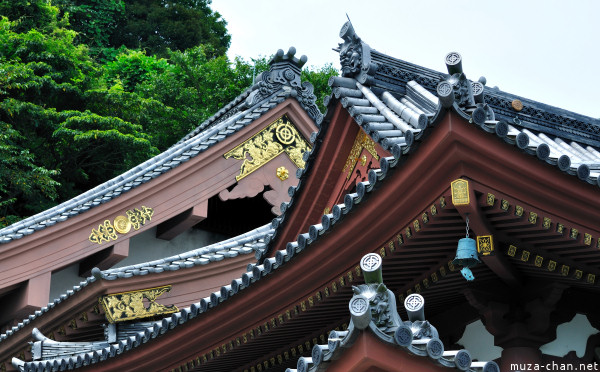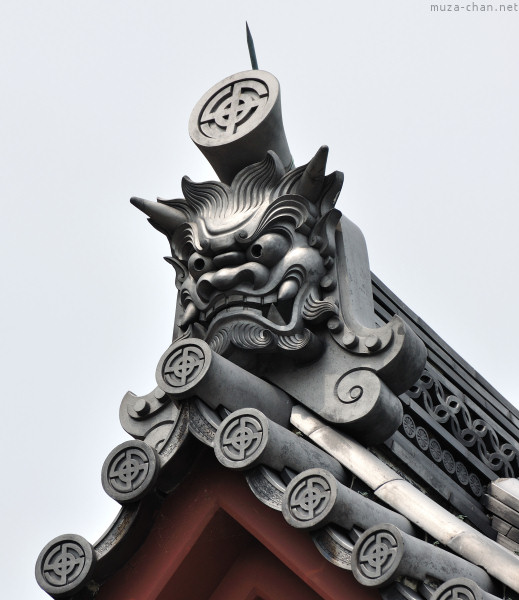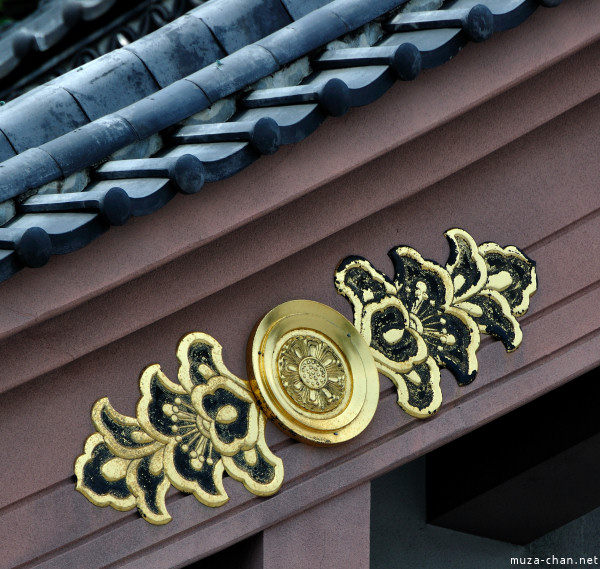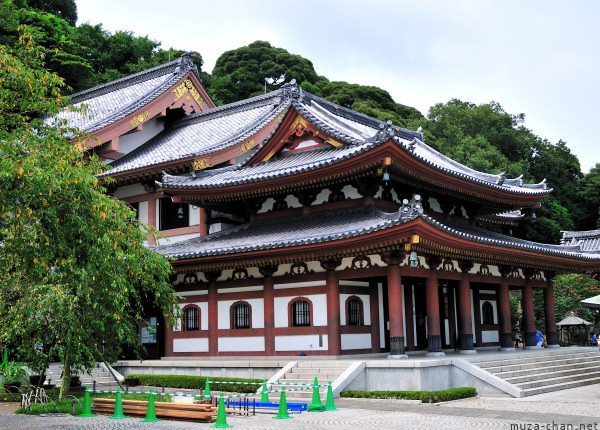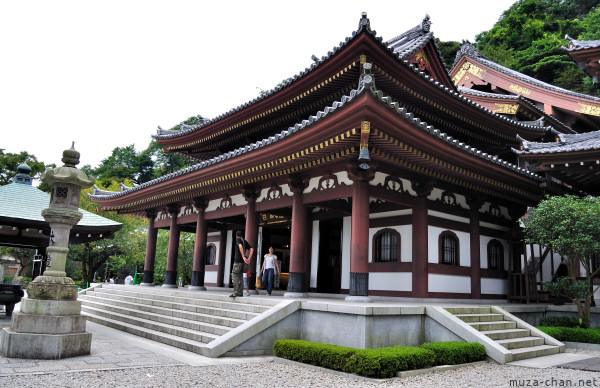Inside this hall (Kannon-Do) from the Hasedera Temple in Kamakura, there’s a statue of Kannon, “Bodhisattva of Compassion", that impressed me with its beauty.
This is the biggest wooden statue of Kannon in Japan (9.18 meters tall). It has 11 heads in addition to the normal one, 3 in the front, 3 on the left side and 3 on the right side, one on the top and one on the back.
Each head has a different expression and this signifies that Kannon is listening to the wishes of all types of people… About the head on the back, that can’t be seen, it is said that it is laughing… but the information is unconfirmed.
|
Photography is forbidden inside the hall, but you can see a picture with the statue on the Temple’s official website.
Unfortunately, the picture doesn’t do justice to this amazing statue and it can’t suggest the strong impression I got when I saw it up close.
The legend tells us how this Kannon statue got to the Hasedera Temple:
|
|
In the year 721, the monk Tokudo Shonin discovered a very large camphor tree in the forest near the Hase village, in the Nara region. Because the trunk was very tall, he decided to make two Kannon statues. The statue made from the lower part was enshrined in the Hasedera Temple from Nara, and the statue made from the upper part, that was larger, was thrown into the sea, with a prayer to reappear where the people would need it.
After 15 years, on July 18th 736, the statue reappeared at the Nagai beach, on the Miura Peninsula, near Kamakura. Those who saw it told that it was glowing in a divine light. The statue was brought in Kamakura and the Hasedera Temple was built to honor it.
The statue remained as it was found until 1342, when it was covered with gold leaf and in 1392 the halo was added.
Unlike other Kannon statues, the Hasedera Kannon holds a Shakujo (Buddhist staff, used usually in Jizo Bosatsu statues) made of tin in its right hand and a vase of lotus flowers in its left hand.
In conclusion, I leave you with some photos with the Kannon-do hall decorations:
În interiorul acestei săli, Kannon-Do de la templul Hasedera din Kamakura, se află o statuie a lui Kannon, “Bodhisattva al Compasiunii", care m-a impresionat prin frumuseţea ei.
Este cea mai mare statuie din lemn a lui Kannon din Japonia (9,18 metri înălţime). Cele unsprezece capete, trei în faţă, trei pe partea stângă, trei pe partea dreaptă, unul sus în faţă şi unul în spate au expresii diferite şi semnifică faptul că zeitatea ascultă dorinţele tuturor felurilor de oameni. Despre capul din spate, care nu se vede, se spune că râde… dar informaţia nu a fost confirmată.
|
În interiorul sălii este interzisă fotografierea, însă puteţi vedea o fotografie ai ei pe site-ul oficial al templului.
Din păcate fotografia nu redă măreţia şi impresia puternică pe care mi-a lăsat-o atunci când am privit-o de aproape.
Legenda ne spune cum a ajuns statuia lui Kannon la templul Hasedera:
|
|
În anul 721, călugarul Tokudo Shonin a descoperit un arbore de camfor foarte mare în pădurea de lângă satul Hase, din regiunea Nara. Cum trunchiul era foarte înalt, călugărul s-a gândit că din el se pot sculpta două statui ale lui Kannon. Statuia sculptată din partea de jos a fost dusă la templul Hasedera din Nara, iar cea din partea de sus, cea mai mare dintre ele, a fost aruncată în mare, cu rugăciunea ca statuia să apară acolo unde oamenii au nevoie de ea.
După 15 ani, pe 18 iulie 736, statuia a apărut pe plaja Nagai, Peninsula Miura, aproape de Kamakura. Cei care au vazut-o au spus că era învăluită într-o lumină divină. Statuia a fost adusă în Kamakura şi pentru ea s-a construit templul Hasedera.
Iniţial statuia a rămas în forma în care a fost găsită, apoi, în 1342, a fost acoperită cu foiţă de aur, iar în 1392 i-a fost adăugată şi aura.
Spre deosebire de alte statui ale lui Kannon, cea de la Hasedera ţine în mâna dreaptă shakujo, un toiag budhist cu care de obicei este reprezentat Jizo Bosatsu şi în mâna stângă un vas cu flori de lotus.
La final, câteva imagini cu decoraţiile de pe acoperişul sălii Kannon-do:
